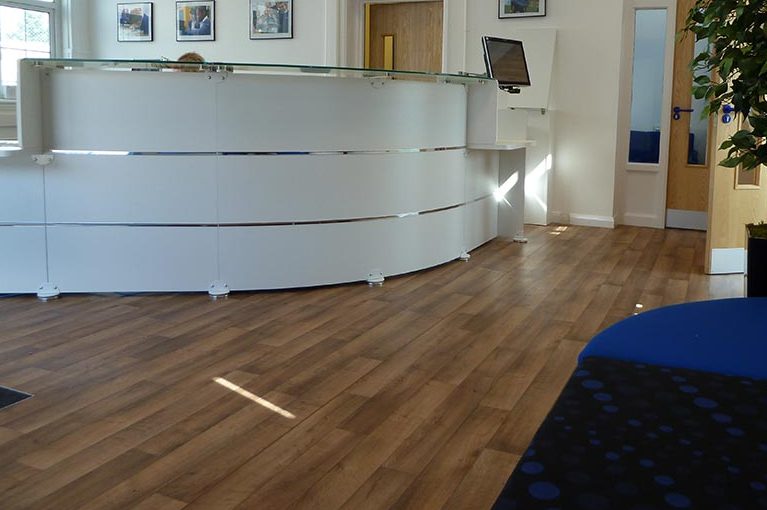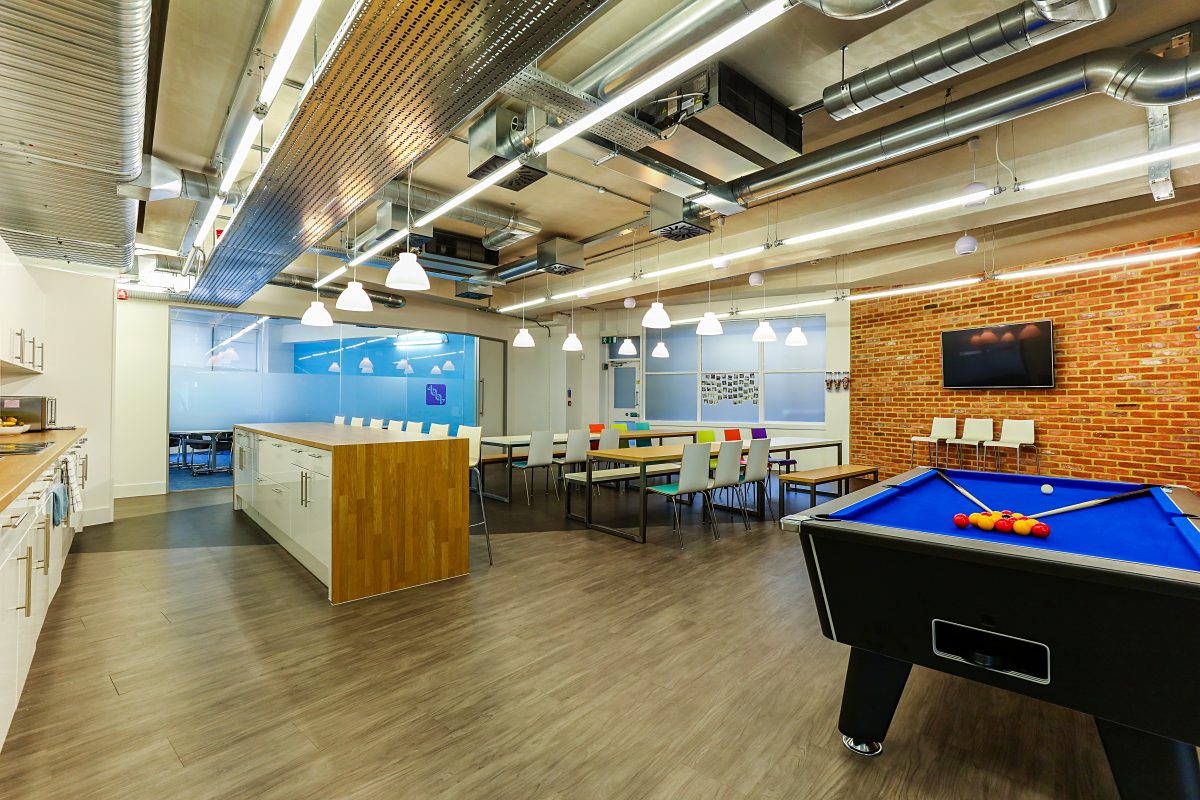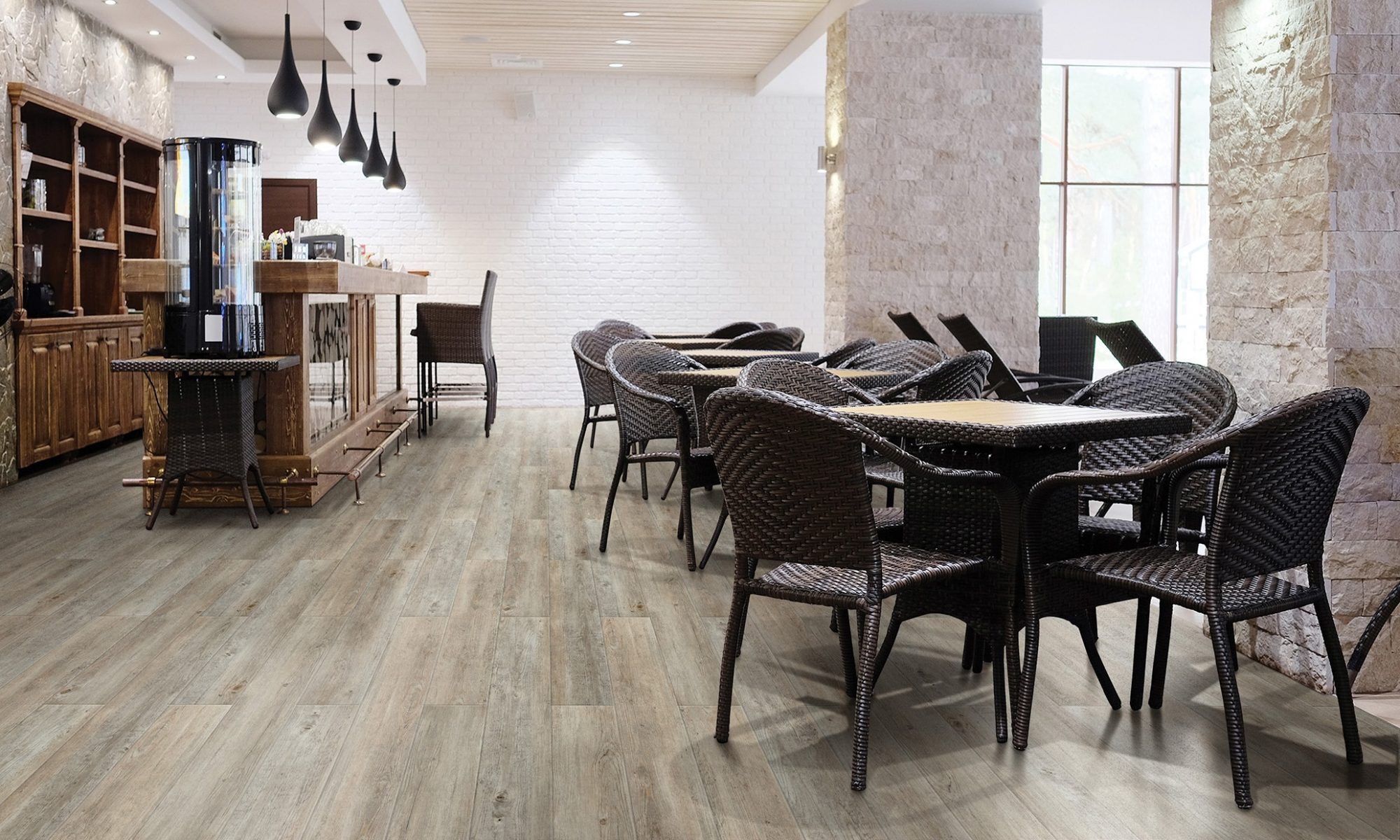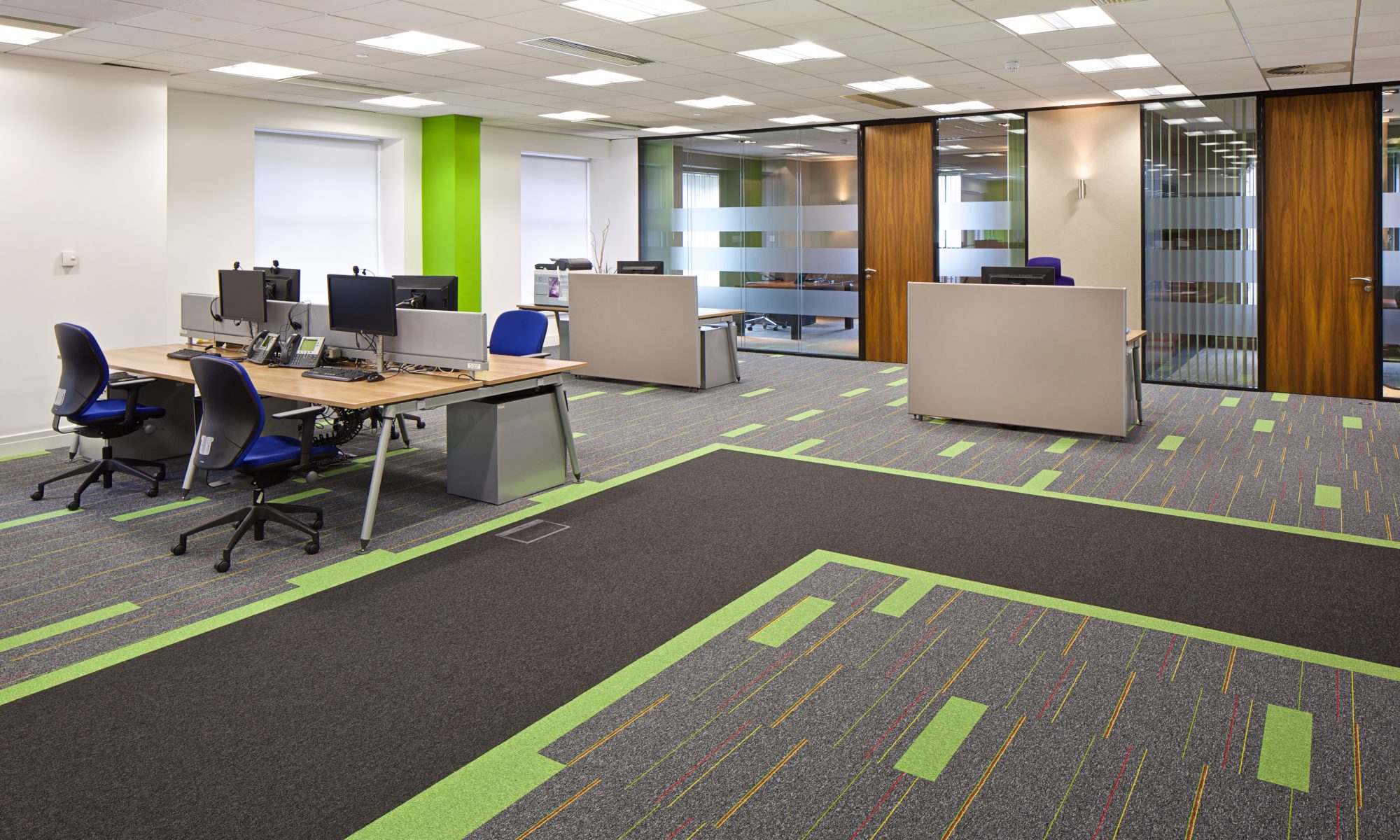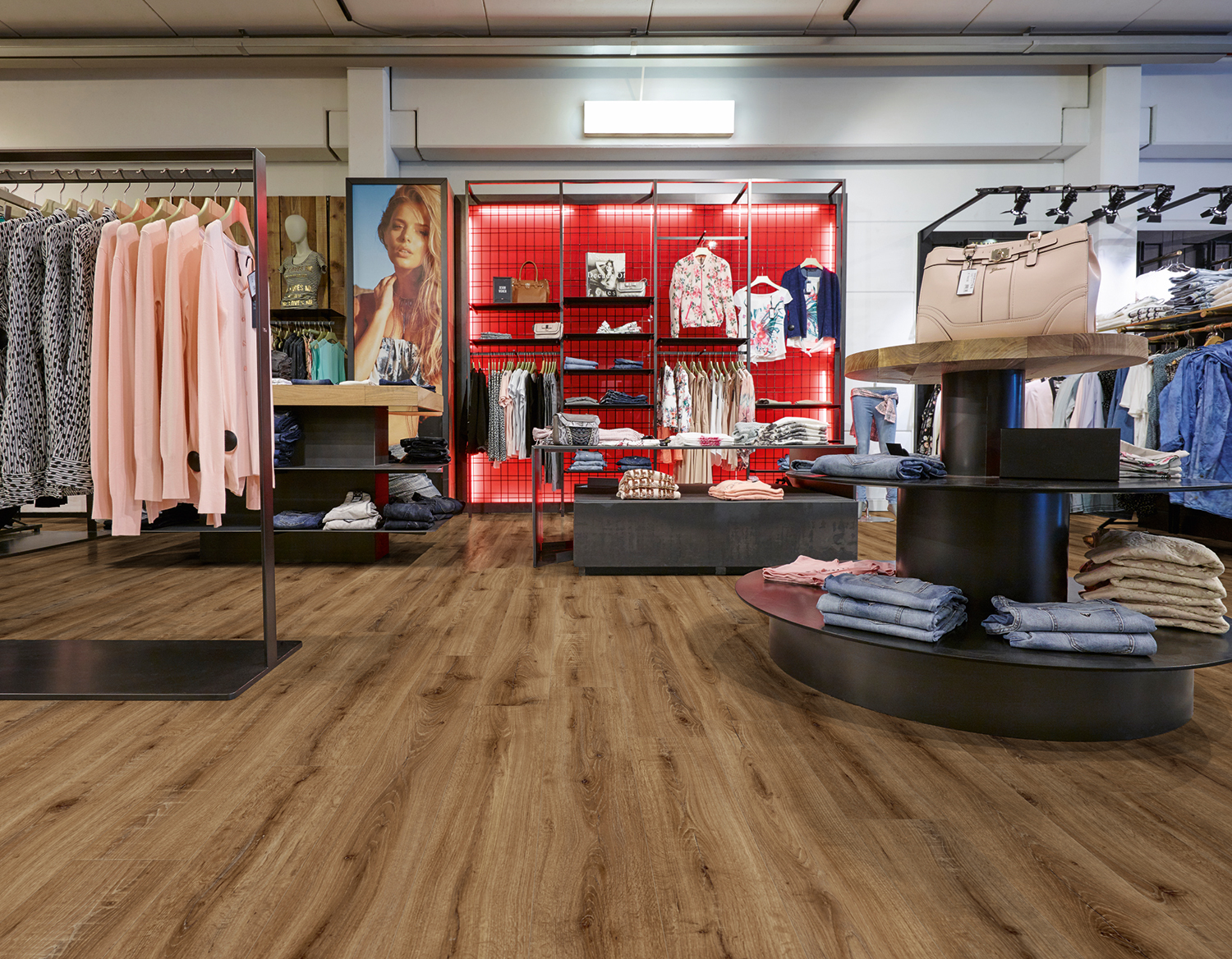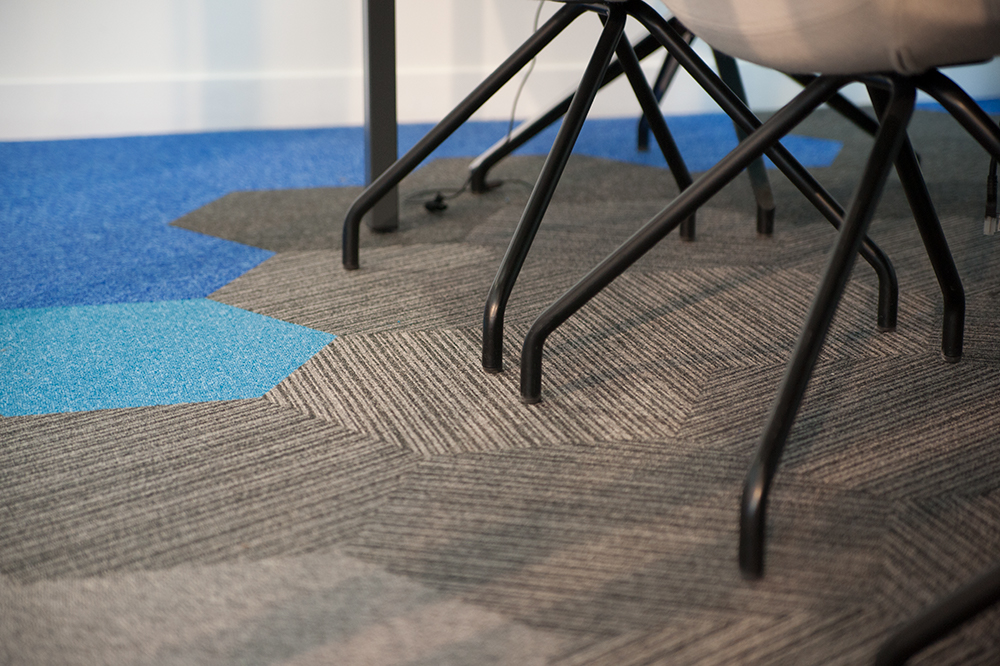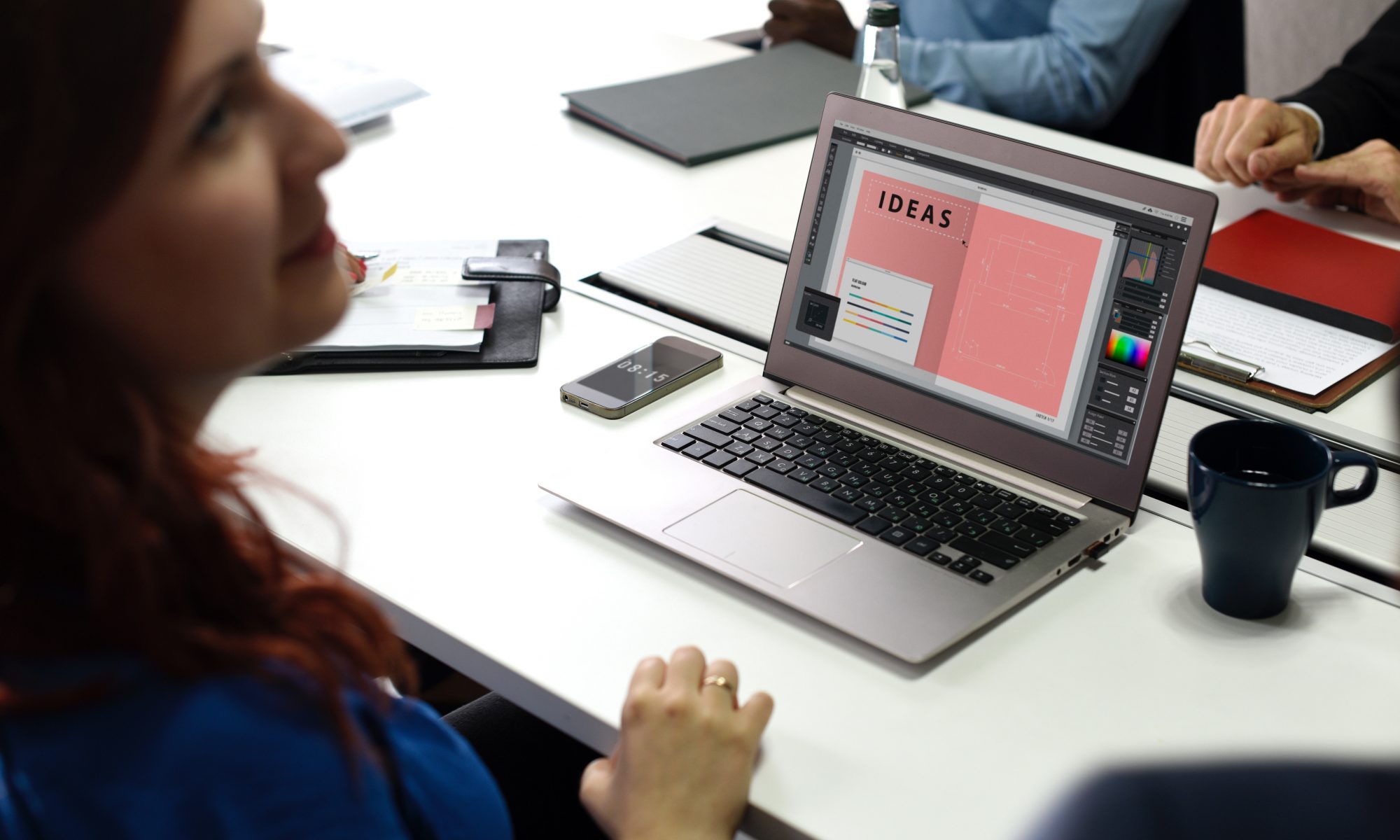Vinyl flooring is hygienic and comes in a wide number of attractive designs that are sure to enhance the appearance of public buildings, but also has the advantage of being a cost-effective solution for many office locations.
There’s nothing old fashioned about contemporary vinyl sheet flooring, it offers modern designs and styles that will enhance the appearance of any workplace, often mimicking the feel and texture of the natural material it is designed to resemble.
Heavy duty vinyl flooring offers durability, slip-resistance and it is ideal for covering flooring defects. Large commercial spaces, especially shops, galleries, schools, etc. benefit from the supreme durability of vinyl flooring, as it is a hard wearing floor covering that maintains its attractive appearance for many years.
Many of the benefits of sheet vinyl flooring also make it a great solution for areas within your office premises:
Cost savings
With a very heavy commercial and heavy industrial rating, vinyl flooring such as Durawood will give excellent life-cycle cost.
Comfort
Vinyl floors are much warmer than stone or tiles and far more easy on the feet when compared to hard wood. Slip resistant vinyl flooring is the perfect choice for wet rooms, kitchens or breakout areas, where spills can be a frequent problem.
Hygiene
This is important in any workplace, where germs and bacteria can multiply quickly. Cleaning vinyl flooring is a simple and easy matter, and just a case of sweeping any crumbs or rubbish from the floor and then mopping over with warm, soapy water to return the floor covering to as good as-new appearance.
Vinyl floors also have a waterproof surface, meaning any spills or water splashes can be easily wiped up and won’t stain the surface of the tiles. The lack of joints also makes it easier to keep clean, what is more it can also be made totally waterproof.
It is important to remember vinyl flooring repels dust, therefore reducing the likelihood of dust mites, again making it a popular hygienic choice.
Variety
Vinyl floors can be found in a variety of different designs, ranging from natural wood floor appearances to stones, or abstract printed patterns. The days of poorly textured designs in vinyl are certainly a thing of the past, they now are able to reflect a highly professional image, while providing a beneficial and environmentally sounder solution to the substrate they are mimicking.
